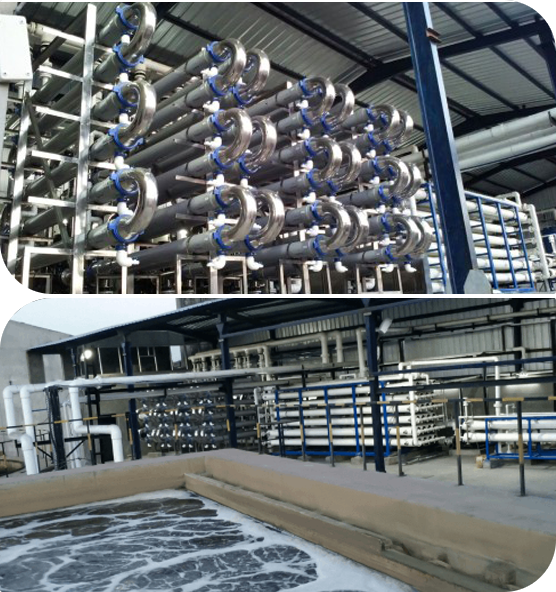
Waterman Engineers Australia is without doubt one of the major suppliers of Zero Liquid Discharge system. A ZLD method is actually a treatment method procedure which can be employed to remove each of the liquid waste from the procedure. The target of ZLD drinking water treatment method is to scale back wastewater economically and generate potable water that may be in good shape for usual use. Zero discharge technique is an advanced treatment system that comprises ultrafiltration, reverse osmosis, evaporation and fractional electro deionization. And we have been a nicely-known provider of ZLD methods.
In several Industries, for example energy, oil & fuel, chemical substances, mining and others, a great deal of wastewater is generated that needs to be managed. Conventionally, this discharge of wastewater is finished through a plant outfall to a floor h2o entire body like an evaporation pond, or occasionally deep properly injected. These practices bring about lots of environmental considerations by the general public in many regions of the earth, as water can be a scarce resource and its administration needs to be monitored. These problems have resulted within the establishment of ZLD processes by quite a few industries to reduce their environmental footprint and improve sustainability. And, Waterman Engineers Australia are ideal ZLD suppliers you can find for this system.
Qualities OF ZERO LIQUID DISCHARGE Technique
The Attributes of the Zero Liquid Discharge system may vary dependant upon the unique design and engineering employed. Even so, some prevalent Houses of ZLD devices involve:
H2o Conservation: Considered one of the first aims of ZLD devices will be to conserve water by reducing the discharge of liquid squander to the surroundings.
Large Water Purity: ZLD units are built to make large-top quality h2o that may be absolutely free from impurities and contaminants, which makes them suitable for use in lots of industrial processes.
Flexibility: ZLD techniques in many cases are made to accommodate a wide selection of enter liquid streams, which makes them functional and ideal for use in various industries.
Innovative Wastewater Therapy: Zero liquid discharge units use Superior wastewater treatment ways to remove impurities and contaminants through the effluent, producing substantial-quality water.
Squander Reduction: ZLD units aid lower squander by lowering the amount of liquid squander that should be disposed of and by creating a concentrated, reliable squander product that may be safely and securely disposed of.
Electrical power Efficiency: ZLD methods might be Electricity-intense due to the large Strength necessities of evaporation and other wastewater therapy processes. Nonetheless, improvements in technological innovation are building Zero liquid discharge units extra Electrical power-economical and price-helpful.
Waterman Engineers Australia manufactures Zero Liquid Discharge (ZLD) devices built to clear away all liquid waste, aiming to supply potable water and minimize environmental impact. Their ZLD units commonly include things like ultrafiltration, reverse osmosis, evaporation, and fractional electro deionization. Essential technologies used are Slipping Film Brine Concentrators, Compelled Circulation Crystallizer, and Some others, by using a two-stage means of pre-concentration and evaporation/crystallization to recover and reuse drinking water. These techniques are adaptable to different industries, emphasizing h2o conservation, large h2o purity, waste reduction, and Electrical power effectiveness. Technical requirements are diverse and customizable, looking at variables like h2o source, move charge, and feed h2o high quality.
The necessity for Zero Liquid Discharge (ZLD) systems arises within the necessity to handle environmental concerns connected with h2o scarcity and pollution. In industries like electricity, oil & fuel, and mining, huge amounts of wastewater are produced. Traditionally, this wastewater is discharged into bodies of water, triggering air pollution and depleting clean water assets. ZLD units aim to minimize these impacts by dealing with and recycling wastewater in the economic process, thereby conserving water, lowering waste, and selling sustainability.
When thinking about the technological technical specs of the Zero Liquid Discharge (ZLD) system, essential facets to target include things like the drinking water supply it is going to take care of, the process's stream amount, the caliber of feed drinking water, the stages of therapy involved, the Restoration amount of drinking water, approaches for concentrate disposal, supplies of construction, functioning disorders, and process automation and Management. These variables ensure the system's success, toughness, and efficiency in managing and recycling industrial wastewater.
Zero Liquid Discharge (ZLD) vegetation provide benefits which include drinking water conservation, waste reduction, and air pollution prevention, contributing to environmental sustainability. They are applicable in industries like ability era, oil and fuel, chemical compounds, and mining, exactly where they assist in handling industrial wastewater effectively, cutting down the ecological footprint, and complying with stringent environmental polices. These techniques are crucial in regions facing drinking water scarcity and for industries aiming to further improve their sustainability and operational efficiency.
FAQs for just a Zero Liquid Discharge (ZLD) program normally address its operational rules, cost-efficiency, routine maintenance specifications, environmental impression, applicability throughout numerous industries, and regulatory compliance. These issues help consumers fully grasp the system's Rewards, complex requires, and suitability for his or her specific wastewater management wants.
1. Zero Liquid Discharge (ZLD) is often a Zld System Manufacturer Zero Liquid Discharge System wastewater treatment procedure created to remove all liquid squander.
two. The technique's parts are affected by the precise industrial course of action, wastewater composition, and regulatory prerequisites.
three. Effluent procedure crops remove pollutants from textile effluents to prevent environmental contamination.
four. Pros include h2o conservation, air pollution reduction, and regulatory compliance.
5. The objective is to minimize environmental impact by recycling h2o and lessening squander.
6-nine. Effluent cure vegetation are stages in wastewater therapy: primary (Actual physical separation), secondary (biological remedy), and tertiary (Sophisticated treatment).
ten. Unit functions include things like filtration, sedimentation, biological treatment, and disinfection.
eleven. Limiting parameters are things that have an impact on the treatment method's efficiency, like pH and contaminant focus.
12. Structure issues contain flow amount, effluent composition, and wanted high-quality of taken care of water.